#pokemon biology tabletop
Explore tagged Tumblr posts
Text
Spiritomb
Spiritomb (#442)
Spiritomb spiritomb
General Information: Spiritomb is a ghost Pokémon made of 108 human souls that were locked into an Odd Keystone as punishment for their misdeeds—or so the legends go.
Habitat: Spiritomb are most likely to be found near civilization, particularly abandoned ruins, but this is not a hard rule, for their keystone can be placed anywhere seen fit by another person.
Life Cycles: Spiritomb is a classic example of the type of ghost Pokémon that was Originally Human by all metrics. The original Spiritombs are creatures born when an enchanter traps 108 human souls together in an Odd Keystone together, and those souls became an entirely new entity: Spiritomb. This process seems to take a while, but it is an ancient dark magic that a handful of enchanters still utilize today. The enchantment is how the overwhelming majority of all Spiritombs are born, with only a few here and there thought to be second generation Spiritombs or higher.
Other ghost-type Pokémon, especially Dusknoir, are really the main things that eat Spiritomb. They are packed full of spirit energy so are a prize meal to consume, but it is difficult for predators to outwit a Spiritomb.
While they surely do reproduce amongst themselves, no one has ever seen Spiritombs participate in courtship or perform any parental activities. No one is sure how they reproduce, and even ghost scientists are unsure whether they are sexless Pokémon or if they have two gametic types (male and female). Given the nature of how Spiritombs come to be, these questions become even harder to speculate on.
Their life spans are well into the hundreds of years.
Behavior: Spiritombs are usually very malicious and vengeful. They are short-sighted and prone to rampages should one of their 108 souls be separated from itself. They are extremely unsafe to be around, approach with caution.
Diet: Spiritombs eat spirit energy all the same as other ghost-types. Given their immobility, Spiritombs will wait patiently inside its Odd Keystone for unsuspecting prey to appear.
Conservation: ???
Relationship with Humans: Spiritombs are fundamentally human at their core. They retain some semblance of their memories as humans, and all 108 were trapped together in an Odd Keystone as punishment for crimes committed when they were alive. The Spiritomb enchantment is an ancient spell known amongst the dark artists for countless generations, but it is supposed to only be used sparingly. Being turned into a Spiritomb is considered one of the cruelest punishments that can be given to someone, and it is outlawed in many parts of the world. But in ages past, rulers of all stripes turned to the dark arts to have their worst criminals and sometimes political opponents turned into Spiritombs, to make an example of them.
In modern times, it is illegal (in most places) to own a Spiritomb barring explicit legal documentation demonstrating that the Spiritomb in question consents to ownership. They are one of many Pokémon who have gained the legal Right To Be Left Alone.
In media, Spiritombs are often used as stereotypical bad guys, or as punishment for a group of bad guys when the setting is older times. Modern criminal rights advocates use Spiritomb as one of their mascots, a symbol against the usage of cruel and unusual punishments of criminals.
Classification: Spiritombs are part of the Order Anthroriginia. They are in a family all to themselves. Uncreatively, they are simply known in the scientific literature as Spiritomb spiritomb, for there is no other Pokémon quite like it, and hopefully there never will be again.

~~~~~~~~
Hey guess what, if you like my stuff, this is my website where you can find other Pokémon I've written on and more information about the game that I’m slowly making! Check it out! I write books sometimes too.
#Pokemon#Spiritomb#Pokemon Biology IRL#Pokemon biology#pokemon irl#Pokemon biology tabletop#pokemon irl tabletop#pokemon tabletop#pokemon biology irl tabletop#tabletop#tabletop homebrew#ttrpg#odd keystone#gen 4#pokemon gen 4#gen 4 pokemon#sinnoh#pokemon diamond and pearl#sinnoh region#sinnoh pokemon#pokemon dppt#pokemon bdsp#pokemon brilliant diamond and shining pearl#homebrew#halloween#spooky#spooky season#spoopy
14 notes
·
View notes
Text
Also going to finally make a pinned post for all my stuff:

BOGLEECH - my tumblr blog is named after this website I created around 2002 and still update. Thousands of pages worth of content focusing on creature design as well as real biology. My review of the original Legend of Zelda monsters might be the most straightforward example of my articles. Links to some of the most popular content:

POKEMON REVIEW ARCHIVE: - I rate and review each and every single Pokemon, in Pokedex order, on its merits as a creature design. I also do so as someone whose favorite animals are all parasites.
DIGIMON REVIEW ARCHIVE - same, but more chaotic.
CREEPYPASTA COOKOFF ARCHIVE - for several years I hosted a yearly writing contest before it grew too big for me to keep up with. There are over a thousand user submitted horror, fantasy, sci fi and surrealist stories here emphasizing unconventional, original ideas you seldom see from the "creepypasta" community!

The original "MORTASHEEN" Monster Archive - since the early 2000's I've created and illustrated more than 800 creatures and counting for my own monster-catching world, now set for release as a tabletop RPG setting.
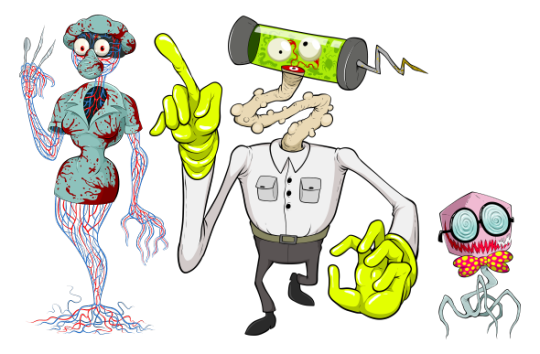
AWFUL HOSPITAL: SERIOUSLY THE WORST EVER (page one): an interactive comedy-horror-sci-fi webcomic I started in 2014 about a medical facility that could maybe be better.
Some of my other internet stuff:
PATREON - constant work makes my patreon updates inconsistent, but the content backlog goes back years with a huge amount of exclusive art and writing. I try to put up new exclusive stuff whenever I can.
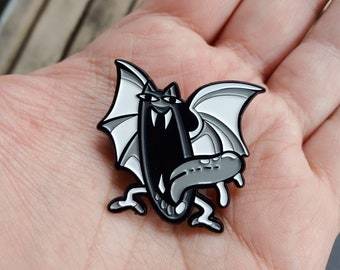
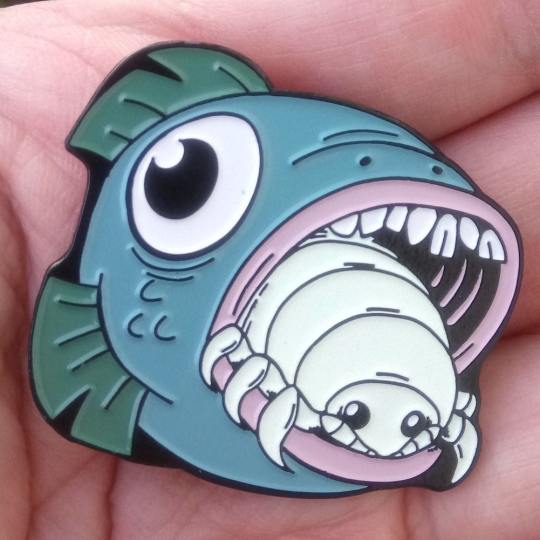
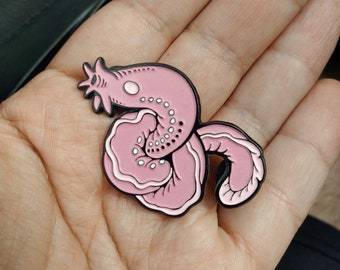

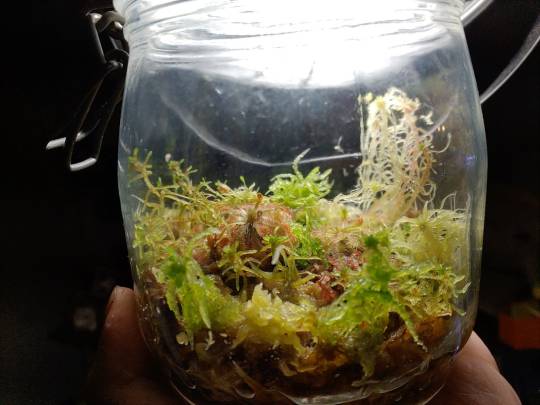
ETSY - I design all sorts of original enamel pins like these, plus I sell zero-maintenance terrarium plants (just leave them in a jar!), original books and other things!
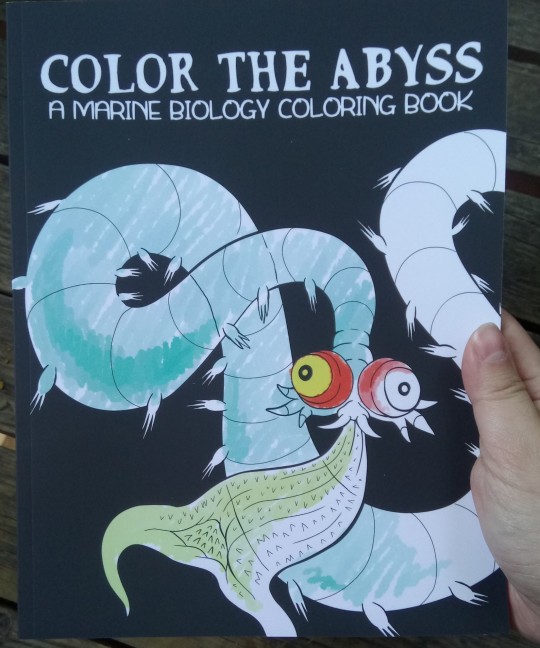
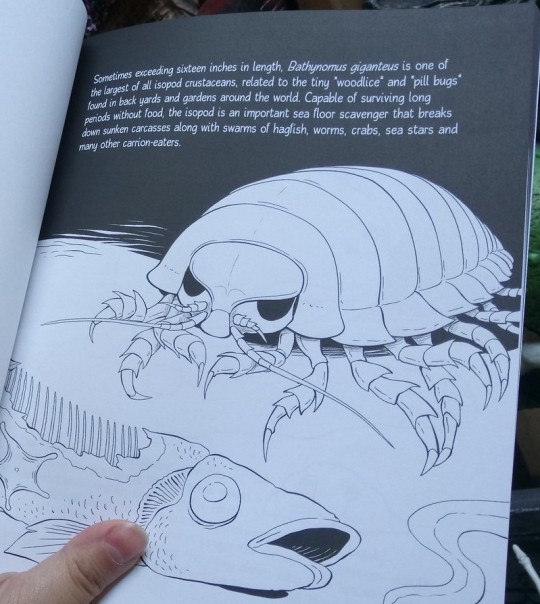
COLOR THE ABYSS (available on the above etsy!) - a 30 page educational deep sea coloring book! Includes a few famous favorites like giant isopods and hagfish, but mostly focuses on less popular, often much weirder animals.
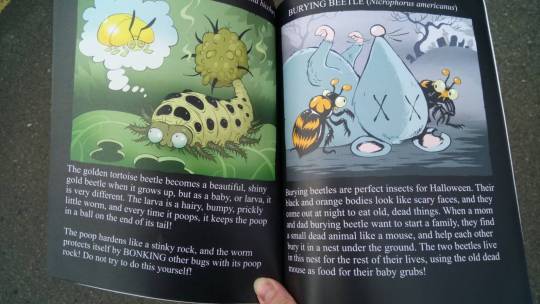
UNBELIEVABLE BUGS - also regularly restocked in the etsy store, 30 of the strangest and most surprising arthropods most people have likely never heard of, illustrated by myself and @revretch, written for even the youngest kids to understand (but will likely teach you something new at any age)

My Itch.io and Ko-fi - both sell digital versions of my books, including some creepypasta collections and my first novel, "Return of the Living," about a world of entirely ghosts suddenly dealing with the appearance of ghost-hunting monsters.
TWITCH CHANNEL - I now try to stream something at least monthly, sometimes weekly when possible, from horror games to books and art.
YOUTUBE CHANNEL - archives my twitch streams and other little things.
INSTAGRAM - look at pictures of my huge weird collection of toys and Halloween collectibles
BLUESKY - I'm going to put mainly just updates to my stuff on here. SEE ALSO:
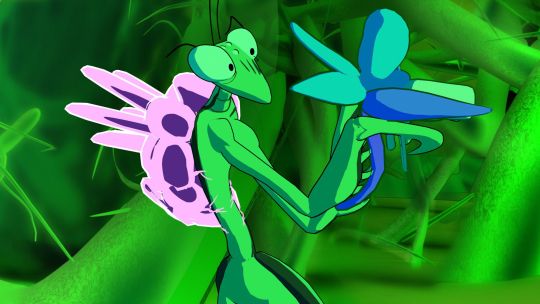
HUMANS-B-GONE - a science fiction animated series by my partner @revretch, about a world of kaiju-size, technologically advanced insects and arachnids to whom vertebrates like us are just pesky little "gubs." Also has a tumblr account @humansbgone FINALLY, HERE'S MY GUIDE AND RESOURCE TO MAKING YOUR OWN INTERNET WEBSITE IN A FEW MINUTES WITH NO KNOWLEDGE OF CODING
723 notes
·
View notes
Text
An old reblog :) for some reason I couldn't find this post in my tags despite definitely tagging it properly. 💢 And damn it, I really like this one!
Here's another Pokemon IRL tabletop bestiary entry :) they're fun to write
Ditto (#132) Archikoproelefsia prototypos
General Information: Ditto are famous for their ability to transform themselves into any living or non-living thing that they can visualize. Individual Dittos often have strengths and weaknesses when it comes to their transformation abilities, with some having difficulty retaining their shape when they’re laughing, some struggling with faces, and many getting details wrong if their memory of the thing is off. When they sleep, Ditto turn into rocks to avoid harm. For some reason, Dittos tend not to like other members of its species, which readily explains why baby Dittos are rare. This is believed to be because Ditto are a social species who try to fit in with others by transforming, and since they cannot transform into each other, it leaves them feeling socially awkward around other Dittos. They average 1 foot (0.3 meters) in height, and 8.8 pounds (4.0 kg).
Habitat: Human settlements, laboratories, and other urban environments. Dittos are extremely rare in the wild. This makes sense, since they are not a naturally occurring species. It is interesting though, as Ditto could be highly effective at living anywhere if it transformed into the right Pokémon or object, but alas they seem to have a strong preference for urban ecosystems and abandoned laboratories.
Life Cycle: Good question! Dittos can reproduce with any Pokémon that is capable of reproduction which has the miraculous quality of exclusively laying eggs of the non-Ditto species, but they only make more Dittos when they reproduce with each other. And they don’t really like each other that much! Additionally, on-going research into Ditto longevity seems to indicate that they have incredibly long lifespans, as specimens from the original Mew-cloning experiments from the 1960s are still alive and thriving.
Behavior: Ditto are a very sociable but ultimately very awkward species, the horrid combination of being largely extroverts with terrible social anxiety and little self-confidence in their ability to be liked by others just as they are. They typically socialize with other Pokémon by transforming into them, which can make for exciting playtime. Which, as stated above, leads to them not really getting along with other Dittos, though if two Dittos were given enough encouragement and therapy, would probably actually get along great and be awkward together.
Diet: Whatever their transformed form eats, otherwise they eat berries and generic Pokémon food quite readily.
Conservation: Least Concern
Relationship with Humans: Ditto have an intricate history with humans, as dittos straight-up did not exist prior to the 1960s when humanity began its first legitimate attempts at cloning Mew. For reasons that only the creators of Mewtwo could even hope to begin explaining, the Mew cloning process turns out to be extremely finicky and anything less than the acceptable tight margin of error results in a Ditto. However, Dr. Fuji, the pioneer researcher behind the original Mew cloning project, was a genius who (after producing 327 dittos of his own) succeeded in creating something other than a Ditto during his experiments, and created another new species, Mewtwo. After the explosion at Fuji Laboratories in 1969, the research data and notes that successfully created the Mewtwos were lost, and all subsequent experiments since then in cloning Mew have resulted in Dittos. Its to the point, where some scientists are no longer even trying to make Mew, and are just looking to make more Dittos. Several tens of thousands of Dittos are on record of having been created since 1961, with most being adopted out to respectable breeders, trainers, rangers, and scientists. This has not stopped some Dittos from getting into wrong hands. Lastly, the research behind why Dittos are created is not widely known, but its status as Top Secret Information ceased in 1991 because a reporter used their country’s Freedom of Information Act to demand that information on bioethical grounds.
Exactly 327 Dittos and several Mewtwos (it’s believed to be 4, but the records were destroyed) were created before Fuji Laboratories was ultimately destroyed in a great explosion that killed every scientist in the facility and destroyed everything within a mile of the explosion. To this day, Fuji Island (a made-up remote island in the Pacific otherwise uninhabited by humans because of its remoteness and dangerous fauna) is the only place one can consistently find wild Dittos. But good luck figuring out which of the highly dangerous Pokémon is actually a successfully disguised Ditto! Fuji Island is only accessible by a 4-day boat ride from the mainland and the only humans who live there are the nice (but weird) ranger throuple who man the lighthouse, and the only people approved to travel there are researchers. Otherwise, Fuji Island is designated as a nature preserve by its host country and the international community.
Ditto serve many roles in human society, but research and the arts are the most common professions. And as companions to Pokémon Breeders, as their ability to reproduce with any reproductively-viable individual is extremely useful—especially in captive-breeding programs of endangered species.
It is estimated that there are between 300,000-400,000 individual dittos in existence, with around 250,000 living individuals being confirmed by government records.
Classification: Pokémon taxonomy is complicated, but at the end of all the debates Ditto are considered to be a unique species from Mew despite them being weird failed clones. Dittos are in an interesting position of being the only member of the genus Archikoproelefsia that is available to the public to own, which is cool to many people because it’s well-known in popular science for being the genus that is the Last Common Ancestor Of Pokémon.
#ditto#pokemon irl#pokemon tabletop#pokemon biology#pokemon irl tabletop#Pokemon#ttrpg#tabletop homebrew#homebrew#why was this post hidden from my searches and my tags#seriously why couldn't i find this fucking post on EITHER blog#Pokemon scarlet and violet#Pokemon biology irl
22 notes
·
View notes
Text

Researchers have recently discovered a new type of Eeveelution, the Flying type Aereon.
The discovery was accidentally made when an Eevee was traded holding a feather.
It appears that most Aereon are quite docile, rather like it's pre-evolved form, and easily pack together.
Many newly evolved Aereon struggle to learn how to use their wings, and will continue to walk and jump, knocking things over with their wings.
- Prof Stephanie
#fakemon#pokemon#fakémon#pokémon#the aurora region#pokemon tabletop#pokémon tabletop#aereon#eeveelution#flying type#new eeveelution#fan made pokemon#fan made eeveelution#headcanon#pokemon headcanon#Pokémon headcanons#headcanons#i made this#pokemon biology
48 notes
·
View notes
Text
hello i would like to find some more mutuals and ive seen ppl do this before so like/reblog/reply to this post if ur looking for mutuals and u post/enjoy:
- bugs/entomology (this is my special interest!!!)
- biology/naturalist stuff
- mad science
- the magnus archives (tho i only just got into it p recently so i only just started season 3 and im trying to avoid spoilers so this is a tricky one. im rly into it and wanna talk abt it but there's still so much i haven't seen! if you are only about as far into the series as I am tho that'd be pretty epic. or if u tag any spoilers as far back as s3)
- nbc hannibal
- cryptids
- lemon demon
- making OCs...maybe tabletop rpg stuff
- pokemon
- horror
also, my blog isn’t strictly 18+, but i would prefer to find mutuals who aren’t minors, thanks! (and i follow from @cantharidins, which is my art blog but i haven’t posted there in a few months (except for when i’ve accidentally reblogged stuff to the wrong blog on desktop lmao)
#disclaimer: you don't need to like all of these things to reblog this post lol#but if ur into some of these things and u look at my blog and Vibe with it? yeah man hit me up#i'm not a fandom blog i'm just vibing#will say this: if u are afraid of bugs or spiders#then maybe this isn't the best place for u#BUT! i do tag bugs and spiders typically#and if there's a particular kind of bug you need tagged for me lmk and i'd be happy to take that into account#anyway#bugs#bugblr#entomology#insects#insectblr#biology#naturalist#mad science#evil science#evil scientist#mad scientist#the magnus archives#tma#tma s3#nbc hannibal#hannibal#cryptozoology#cryptids#lemon demon#pokemon#horror#looking for mutuals
33 notes
·
View notes
Text
jane’s pokemon team!

much as some young children have “starter pokemon” (not the starter sets of the game, but Babby’s First Pokemon which teaches them the responsibilities of raising pokemon as a trainer) like caterpie, rattata, etc. klefki was jane’s starter and she has had him since childhood. although he’s likely as old as she is, age hasn’t weakened him and jane has become particularly curious about the biology of mineral egg group and fairy-type pokemon because of him, as he seems to have no organic components but absorbs (according to various dexes) metal ions and minerals in order to sustain himself. klefkis love to collect keys and will sneak into human homes in order to find/steal keys, and that’s how jane found him--in one of the drawers of her childhood home (probably while she was taking the drawer apart w/o her mother’s permission).
they have an incredibly close bond and although jane is largely uninterested in battling, klefki is a gifted battle partner for her, as they understand each other very well. he rarely spends time in his pokeball; at eight inches tall, he’s small enough to easily fit into her bag with his eyes peeking out of the pocket, or to stay in her lap or on the tabletop at her side. he’s a bit spoiled and rarely ends up hovering on his own; he’s always somewhere close to jane and she’s usually carrying him. if she’s working on something in her workshop, he has his own “workstation” where he is free to mess with, rearrange, absorb, collect, etc. scrap wires, keys she’s bought for him, etc. as a fairy/steel type, he, like jane, combines delicacy, sensitivity, and a certain quantity of... Magic, i guess, with rigidity and a core of strength. he is also scared of thunderstorms, like jane (although she is primarily affected by the sound of thunder versus the fear of weather and its effects, which she actually loves to observe) and will start to rattle or cry if he senses an oncoming storm. jane is the only person allowed to touch his keys.

klinklang!! like klefki, he has been with her a long time, although he and jane probably only met each other when she was in college first studying engineering. he was just a little klink then. rather than evolve him through battle, jane evolved klink --> klang --> klinklang by working with him on projects, asking him to help her power various machines and inventions--a mechanical parallel to how rotom would come to be used to power electronic devices. where klefki is her emotional partner, klinklang is her intellectual partner, and was the inspiration for the self-sustaining power source of the prosthetic heart. while he primarily lives in/around her garage workshop he also has free reign of her home, and like klefki is rarely, if ever, asked to enter a pokeball. he’s most content when he and jane are working together on a project and even when he’s not required to power something, he’ll be quite happy to putter by her side when she’s drawing plans or even just making dinner for herself, as he likes to feel like he’s a part of the action.

remember all the times i’ve said jane is just a total sucker for animals, like incapable of saying no to them? welp.
i believe psyduck is her youngest pokemon, acquired maybe only a few years ago. jane’s preference has always been to keep her team small in order to focus on the well-being of just a few pokemon, and she’s shied away from adopting organic (or animal, if you prefer, versus steel/mineral) pokemon especially because she’s conscious that an organic pokemon will require a certain amount of routine caretaking much like having a child or a pet. i think it was only after she had dorothy that jane really felt she was 100% capable of taking care of an organic pokemon and she came to adopt psyduck potentially, like, i want to say through a pokemon rehoming service at her synagogue.
psyducks are very sensitive, vulnerable creatures, with perpetual headaches and a massive amount of psychic power which they are prone to unleashing when triggered by pain, anxiety, fear, etc. i mean look at this thing. psyduck is most happy when there is absolutely nothing going on, which means she and jane are, in a way, perfectly suited for each other, and her quality of life has increased enormously since coming to the library-quiet andrews home. she is, unfortunately, the only one of the team not allowed in jane’s workshop, as the sound of the machines, and watching jane do lots of activities she doesn’t understand, makes her quite anxious. she also does not get along particularly well with klinklang and if he is in the house, she will often be keeping herself very stiffly on the opposite side of the room. she is also a bit jealous of klefki and klinklang, due to their longer relationships with jane, and is also jealous of klefki’s constant physical closeness with jane; psyduck will often pull on jane’s hands, bump into and lean on her legs, or climb into her lap in order to try to steal attention from klefki for herself.
in essence, she’s the toddler of the group. a bit like a dog that comes from a neglectful home and becomes extremely needy as a result, her previous experiences with a poor trainer, as well as a naturally high level of anxiety common to all psyducks, have led her to need lots of time, attention, and reassurance, and part of what jane works on with her in an active, training sense is the establishment of boundaries and the ability to self-soothe--something jane had to learn to do with dorothy first and has gradually figured out she needs to do with psyduck as well.
4 notes
·
View notes
Text
No no no, the electric rodents all share a common ancestor with each other, and it's the non electric rodents (like Skwovet and Greedent) that are derived from the electric rodents. Being an electric type is the ancestral trait of rodent Pokemon, and ultimately what has to be evolved away from.
the pokémon equivalent of carcinization is dragons evolving into jet planes
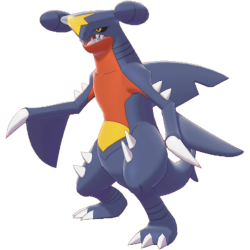
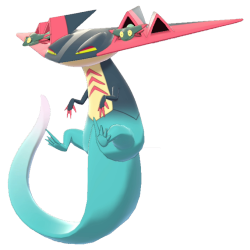
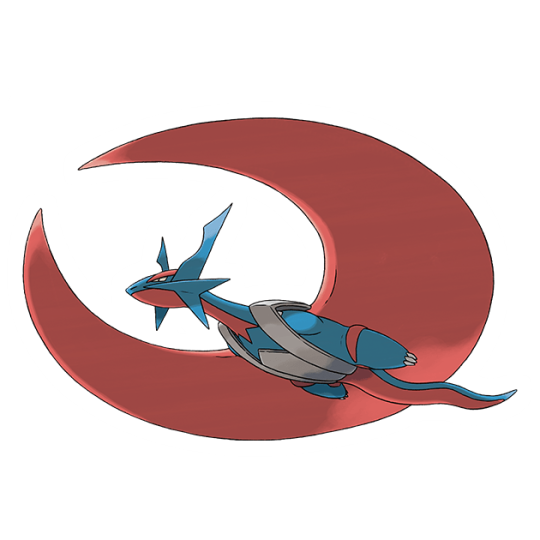

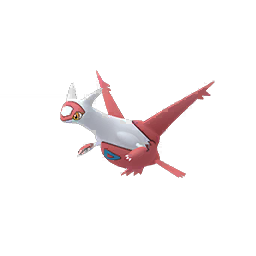
#pokemon#pokemon biology#pokemon irl tabletop#homebrew#pokemon irl#pokemon taxonomy#pokemon tabletop#ttrpg#tabletop#tabletop homebrew#pokemon biology irl
19K notes
·
View notes
Text
Shuckle
Shuckle (#213)
Shuckle modernus
General Information: Shuckle the Slime Mold Pokémon! This non-evolving Pokémon is known for its ability to turn berries into a mysterious juice packed with vitamins… and the fact that it has the strongest defensive stats out of all known Pokémon!
Shuckles have powerful digestive juices that allow them to turn their food into nutritious “Shuckle Juice” (it’s not always made with berries), and Shuckles will use their digestive juices to slowly dissolve rocks to form a new shell.
They average at 2 ft (0.6 M) tall and 45.1 pounds (20.5 kg), that weight being almost entirely the rock that forms its shell.
Habitat: Shuckle live in the mountains all over the world. How did they get there? Who knows! But Shuckle fossils have been found in rock beds for long over half a billion years, particularly in the modern remnants of the Central Pangean Mountains (Appalachians, Little Atlas Mountains, the Scottish Highlands/Caledonian Mountains, Ouachita Mountains), a range that was formed by multiple orogenous events over hundreds of millions of years. Because of this, Shuckles are believed to be one of the earliest surviving Pokémon species, a living fossil event amongst the other living fossils. Their simple shapes and survival strategies have earned them the privilege of remaining relatively unchanged after all this time, though of course it’s hard to know for sure what ancient Shuckles looked like since it’s their rocky shell that fossilizes well, not the soft squishy bits of their real body. But to better understand the longevity of the Shuckle species, they survived multiple mass extinctions and were ancient even to the dinosaurs, and they will likely survive humanity, too.
Life Cycles: Shuckles can live for decades. They are laid in small batches of 10-20 at a time, but each batch can be laid within a month apart from each other under optimal conditions. Newly hatched Shuckles receive no parental care, instead left entirely to fend for themselves. This is fine because Shuckles have a powerful instinct to know what they need to do: find a rock and claim it as theirs. Often the parent Shuckle will gather some discarded Shuckle shells or suitable rocks to have near the eggs—this is the extent of their parental care. The eggs will hatch in about 3 weeks after laying.
Unprotected Shuckles are at a strong risk of predation from primates, birds, rabbits, and rodents. Their soft squishy bodies make a fun gummy snack for predators, but once a Shuckle has its shell the risk of predation drops tremendously. Now, the predation risk comes from Pokémon that like to eat rocks, because they will definitely also eat the Shuckle. But have no fear, Shuckles are tough Pokémon that have survived on Earth for half a billion years for a reason!
As for mating habits, Shuckles have higher understanding of when it’s time to make more of themselves and when its not. They can reproduce up to every month for years at a time, but this is seldom necessary. Instead, Shuckles have an innate sense of when its an appropriate time to reproduce and when it isn’t. Scientists are uncertain when this higher reasoning trait evolved, but it almost certainly has led to Shuckle’s success as a species. Plus, while Shuckles have “males” and “females”, they are fully capable of agametic reproduction should it become necessary. And their “males” and “females” are not determined by sex chromosomes, but rather is determined by mysterious environmental factors that have eluded scientists for centuries.
Behavior: Shuckles are not terribly picky about who they mate with, and will often mate with whoever is nearby and down. The fact that Shuckles are, for some unknown reason, in the “Bug” Egg Group, has surely done the species a huge advantage in mate availability.
As individuals, Shuckles are shy Pokémon who will hide in their shells at the sight of danger. They are incredibly slow moving and thus do not spread out quickly. Sometimes a Shuckle will hitch a ride with a bigger and faster Pokémon to get to where they want to go.
As companions, Shuckles are loveable and friendly and super safe for children of all ages.
Diet: In “modern” times, Shuckles eat berries and other fruits. These are stored in its shell that slowly decompose and ferment into its famous Shuckle Juice. What did Shuckles eat before the evolution of flowering plants? That’s a great question, and one that has been puzzling scientists for decades. Its believed that Shuckles once ate lichens, mushrooms, algae, and the early terrestrial plants that existed half a billion years ago. In fact, Shuckles will still eat lichens and mushrooms if their favorite food (fruits and berries) are unavailable, but this produces a Shuckle Juice that is distasteful to humans.
Conservation: Least Concern
Relationship with Humans: Humans have had Shuckle friends for millennia, a source of fermented fruit juice that is packed full of vitamins and amino acids that may be difficult to acquire during hard times. This harvesting of Shuckle Juice is not a fast process and certainly no substitute for having enough food to eat, but poor families have been able to feed their Shuckles beets, blight potatoes, or even certain inedible berries and have their Shuckle produce a juice that helps balance their nutritional intake, making it easier to withstand famines and blights. Shuckle Harvesting is a time-honored tradition in Northern Europe, Morocco, and the Eastern United States, where Shuckles are at their most abundant.
In modern times, Shuckle Juice is moderately expensive, often made in small batches at local farms.
Classification: There are many “species” of Shuckles over the years, but many of these species designations are for archeological distinctions rather than any substantial evidence that there is a meaningful difference between them. There have genuinely been clear species distinctions, largely in the form of different shell shapes, but for the most part Shuckles have remained relatively the same. The modern version of Shuckle, Shuckle modernus is called thus because of the fact that it happens to be the current species.
~~~~~~~~
Hey guess what, if you like my stuff, this is my website where you can find other Pokémon I've written on and more information about the game that I’m slowly making! Check it out! I write books sometimes too.
#shuckle#pokemon#pokemon biology#pokemon biology irl#pokemon biology tabletop#pokemon irl tabletop#pokemon irl biology#pokemon tabletop#pokemon irl#pokemon biology irl tabletop#tabletop homebrew#tabletop#ttrpg#homebrew#pokemon gen 2#gen 2 pokemon#pokemon gold and silver#pokemon heartgold and soulsilver#pokemon crystal#pokemon gsc#pokemon hgss#pokemon silver#pokemon gold#johto#pokemon soulsilver#pokemon heartgold#johto region
6 notes
·
View notes
Text
Delibird (#225)
Delibird
Glacieshermes amicibilis
General Information: Delibird the Delivery Pokémon! Delibird are known for bundling up food inside their peculiarly shaped tails, which they use to feed their chicks or lost travelers.
Delibird averages at 2’11 feet tall (0.9 M) and 35.3 pounds (16 kg).
Habitat: Delibird live in the mountains of the Old World, especially the Himalayas. They build nests on cliff edges. Humans have brought them to the New World, where they have acclimated to the steep cliffs of skyscrapers and the Rocky Mountains, but their populations are limited and there are many creatures that are willing to eat Delibirds. There seems little risk of Delibirds reaching untenable populations, but they are considered an exotic species to Turtle Island.
Life Cycles: Delibird are known to live up to 15 years in the wild, and 25 years in captivity! Once an individual reaches reproductive maturity at either level 15 or 1 year of age (whichever comes last), they will lay a single egg each fall and watch over it as a mated pair for the entire winter. This egg hatches at the onset of Spring, when the parents will take turns watching over the egg or fetching food for the nest. The baby is well taken care of on its cliffside nest, with its primary methods of death involving: starvation, one of its parents dies and thus leaves the chick undefended for periods of time, inability to fly when it attempts to fly for the first time from its nest, or particularly violent and desperate predators who are willing to fight off an angry Delibird parent. After it leaves the nest in early late summer, the Delibird is at risk of general predation from aerial assaults, snakes, giant spiders, cats, and other generalists.
Behavior: Delibird are fiercely helpful sorts who always seem to have food wrapped up in their tail bundle. They enjoy aiding lost travelers by giving them food, and they enjoy tending to their chick. Delibirds are social animals who pair up well with humans and other Pokémon. While they can mate with other species, it’s rare for a female Delibird to mate with non-Delibirds because they value a mate who will care for the chick as much as she does.
Diet: Delibirds are omnivores! They eat berries, nuts, and bugs! Beware, sometimes a helpful Delibird will try feeding you bugs!
Conservation: Threatened. Conservation efforts are not as effective as scientists would prefer, for many such efforts include the conservation of exotic populations in the Rocky Mountains, while ignoring the greater need for environmental protections in parts of Southern Asia and Europe.
Relationship with Humans: Humans have been fascinated by Delibirds for generations. They’re small little guys who carry food and help weary travelers on cold icy peaks! Their parental dedication is admirable and their predilections toward altruistic aid is generous. Some cultures consider them to be the familiar of messenger gods, traveler gods, or even beings that represent the trait of generosity and charity. There are some cultures who eat them, too, since they’re not difficult to hunt, but there are others still that revere them. Then, of course, in modern days the Western world has Delibirds associated with Christmas! This is leftover from certain Pagan traditions, who loved the Delibird for its generosity in even the harshest of cold mountains and their seeming abundance in mid-winter—some of these peoples ate them because Delibirds were what was available in the middle of winter—hey! Beliefs around animals are complicated! Still, the continued love of Delibirds in association with winter festivities persists into the modern day, where Delibirds and their present-filled bundles make them one of the companions of Santa Claus! In fact, Delibirds and Stantler are the quintessential Christmas Pokémon.
In less positive information, it does mean that Delibirds are subject to the “Easter Bunny” phenomenon, where households will get a baby/juvenile Delibird for the family for the holidays, then abandon it when it grows up and stops being a cute baby. This is a huge contributor to the growth of stray populations in Turtle Island, and many awful things can end up happening to these abandoned Delibirds. There are annual campaigns to remind people that a Pokémon is a companion for their whole life, not just for Christmas, which seem to have some success in minimizing the abandonment of Delibirds.
Many postal services utilize Delibird as their mascot!
Classification: Glacieshermes amicibilis is the scientific name of Delibird. “Glacies” means “ice” in Latin, and Hermes is the Greek god of messengers, while “amicibilis” means friendly. Thus, Glacieshermes amicibilis means “friendly ice messenger.”

~~~~~~~~
Hey guess what, if you like my stuff, this is my website where you can find other Pokémon I've written on and more information about the game that I’m slowly making! Check it out! I write books sometimes too.
#delibird#pokemon#pokemon biology#pokemon biology irl#pokemon irl#pokemon irl biology#pokemon tabletop#pokemon biology tabletop#pokemon biology irl tabletop#homebrew#ttrpg#tabletop#tabletop homebrew#gen 2 pokemon#pokemon gen 2#pokemon gold and silver#pokemon crystal#pokemon gsc#johto
5 notes
·
View notes
Text
Magikarp & Gyarados
Magikarp (#129)
Serpiscis miserabilis
General Information: Magikarp is a fish-like Pokémon often seen in many bodies of water. They average in at 2’11 feet long (0.9 M), and 22 pounds (10 kg).
Habitat: Magikarp are actually native to the Old World (and the world’s oceans), found in any body of water large enough to support their diets. With that said, Magikarp were introduced to the New World’s interior water bodies during the Columbian Exchange. Magikarp are not considered invasive, but Gyarados are! Magikarp and Feebas are some of the few fish Pokémon who can naturally thrive in both freshwater and saltwater for extended lengths of time. Additionally, Magikarp and Gyarados are extremely tolerant of pollution.
Life Cycles: The thing is, Magikarp seem like they’d be simple Pokémon, right? Simple behaviors, simple life cycles, all that. Nope. Now, in the wild in general Magikarp are not typically the ones who reproduce because they often evolve into Gyarados before the next breeding season occurs. But, this isn’t true for all Magikarp, as researchers have discovered remote locations where schools of Magikarp will swim upstream and lay their eggs, then return to the ocean. Some Magikarp have even been recorded returning to these sites multiple years in a row! Clutches are typically between 500 and 750 eggs per season. When is the breeding season? Who knows! Different populations of Magikarp seem to have different social patterns on breeding, though there does seem to be a general preference for the breeding season to be in the winter for ocean-bound populations, and spring for the lake-bound. And the number of breeding seasons varies from once or twice a year, depending on the climate and resources available.
Magikarp are predated upon by any predator big enough to eat it, especially Pidgeot, but with the stark exception of Gyarados. Frillish, Jellicent, Tentracruel, and Sharpedo are common ocean predators.
Behavior: Magikarp are highly social Pokémon, and need other Pokémon around to make it happy. Perhaps consider a Feebas for a friend? Magikarp are overwhelmingly good, docile, and relatively harmless Pokémon, who make excellent companions (if incredibly weak) who will love their trainer dearly if treated right!
Diet: Algae, whatever floats into its mouth. Trainers, you can give your Magikarp standard fish Pokémon food and it’ll be quite happy with that.
Conservation: Least Concern
Relationship with Humans: Magikarp and Gyarados have a long and complicated history with humans. Magikarp are treated as food sources (well, not good food sources), pets, nuisances, jumping athletes, and harmless. They are incredibly common in urban water bodies, in large part due to humans bringing them there on purpose. Most urbanites like Magikarp, having the same charm as pigeons (affectionately) but this does mean there are many who dislike Magikarp for no particular reason except that they exist. The Evolutionary family of Magikarp is under much scientific research due to their intrigue, their mystery, and their extreme prevalence to humans, and they make great test subjects in experiments.
There is also a long history of Magikarp domestication, particularly from East Asia, which results in there being many color variants available from breeders
Color Variants: There are canonically 32 color variants of Magikarp + its shiny form (according to Magikarp Jump) and this holds true in this universe. What makes a shiny form different? There’s literally some magical property to shiny Pokémon that causes them to sparkle when they attack or come out of a Pokéball, while color variants are just that, a color variant. Importantly, these variants only exist in domesticated stock, not wild ones, and in the wild these variants tend to be naturally selected against by predators (because they can be singled out in a school). Wild-caught Magikarp will near-invariably look like the Standard pattern.
Note: Whether or not these color variants translate into the Gyarados having variant patterning, is up to the player or Game Master
Classification: Magikarp is in the genus Serpiscis alongside its closest relative, Feebas. For reasons that are unknown to science, Magikarp is natively found in the Old World and Feebas in the New World, but both can be found in the ocean.

Gyarados (#130)
Serpiscis feroces
General Information: Gyarados is a water and flying type Pokémon, known as the Atrocious Pokémon. It’s scales are as hard as steel and its fangs are said to be able to crush stone. When they evolve from Magikarp, something changes in their brain chemistry that triggers aggression and violence, and their rampages have been known to last for up to a month.
Gyarados can Mega Evolve! Mega Gyarados is a Water/Dark type. Both average in at 21’04 feet (6.5 M) tall, and regular Gyarados weighs about 518.1 pounds (235 kg), and Mega Gyarados weighs about 672.4 pounds (305 kg).
Habitat: Magikarp may not be considered invasive, but Gyarados sure are! Well, sort of. They used to be more invasive than they are, but Gyarados have begun to naturalize to the New World, though local and federal agencies will still relocate troublesome ones to the ocean.
Life Cycles: Researchers believe that Gyarados are typically the ones who reproduce in the wild, if nothing else because of numbers. Gyarados lay clutches of Magikarp eggs close to the 1000s each breeding season, and they are in fact actually quite protective of Magikarp. Truly dedicated researchers have found that Gyarados will defend their babies from predators for at least a couple of weeks after hatching. But as different populations have different social patterns on breeding and reproduction, Gyarados are surprisingly enigmatic creatures.
Behavior: Gyarados are extremely temperamental creatures. If a trainer raised it right as a Magikarp (or otherwise won over a wild Gyarados’s loyalty, somehow), then congratulations you have a loving and overly protective sea serpent as your companion! If not, then look out because they will try to hurt you. Wild ones especially are known for being extremely dangerous, not at all helped by the fact that they like to live in herds (also called storms). Like Magikarp, they are highly social Pokémon who benefit greatly for the company of others.
Diet: Gyarados are carnivores that eat other fish.
Conservation: Least Concern
Relationship with Humans: Gyarados’s relationship with humans is not as benign as Magikarp’s. They have historically been treated as dangerous since even ancient times (old cave paintings depict their rampages), on top of being a nuisance, great companions, and sometimes even revered as the deity of destruction. Many legends surround Gyarados, almost exclusively surrounding its violent nature and the forbearance of doom and destruction should they appear. Mega Gyarados is even worse.
In modern times, the prevalence of Magikarps in urban areas does mean that occasionally one of those Magikarp will evolve into a Gyarados in the middle of a big city, like Chicago, and the local Taskforce has to come in and handle it. Urban Gyarados evolutions are an infrequent but persistent danger to urban environments, but they can only really be handled as they occur.
Classification: Gyarados is mostly closely related to Milotic and Feebas, and are members of the O/M/G clade.
#magikarp#gyarados#omg clade#pokemon#pokemon biology irl#pokemon biology#pokemon biology irl tabletop#pokemon biology tabletop#pokemon tabletop#tabletop#homebrew#tabletop homebrew#ttrpg#pokemon gen 1#Pokemon Red and Blue#Pokemon Red and Green#Pokemon Yellow#Pokemon Scarlet and Violet#Gen 1#Gen 1 pokemon
22 notes
·
View notes
Text
Rockruff & Lycanroc (#744, #745)
Rockruff (#744)
Lykanthropos familiaris (Rockruff)
Abilities:
Keen Eye, Vital Spirit, Own Tempo, Steadfast
Rockruffs are a pure rock-type dog Pokémon that average at 1’08 feet tall and weigh 20.3 Ibs. They have in impeccable sense of smell, to the point where they’re known for remembering anything they’ve smelled once.
Habitat: Rockruffs are found in Australia, but like the dingos of our world, were brought there by humanity a long time ago—estimated to be maybe 8,000-9,000 years ago. So, late enough that Tasmania split from the rest of Australia, which is why Rockruffs are not found natively in Tasmania. Unlike the dingos of our real world however, Rockruffs can even be found in the forests of Southeast Australia. But they generally prefer more arid climates.
Life Cycles: Rockruffs have fairly standard lives as a dog Pokémon. They are born between May and August (winter) to litters ranging widely from 1 to 10, but 5 being fairly standard. The pups will stay in their den for the first 3 weeks of their lives, then leave it completely with their parents at around 8 weeks old. These dens are typically under rocks or in abandoned burrows.
Rockruff pups will stay with their parents until around 10 months old, where they will then leave the pack and start their own lives. Rockruffs in particular will form small packs, often sibling packs, for a couple years until they evolve into Lycanroc. While reproduction cannot occur before reaching level 15, they also cannot reproduce until around 2 years of age.
The mating season for Rockruffs and Lycanrocs is between March and June, though individuals in tropical climates can mate at any time of the year, but litters are once per year. Once the mating rituals have completed, eggs will appear in their burrows. The gestation periods for these eggs is 60 to 70 days, and the Rockruff/Lycanroc pair will take turns defending their eggs from egg thieves during that time period.
By and large, the biggest threat to Rockruffs are territorial disputes, giant spider Pokémon, giant snake Pokémon, large bird Pokémon, and stochastic events such as falling from cliffs, wildfires, or mass floodings.
Behavior: Rockruffs are quite friendly as pups, even making for excellent starter Pokémon for new trainers. Be aware, though, that Rockruffs become increasingly more aggressive as they get older, but to a trainer or its family it will remember the love that is there and continue to be steadfast in its loyalty. The temperament behavior change in Rockruffs can be too much for some trainers to handle, and this leads to many being abandoned by their unfit trainers.
As a show of affection, Rockruffs enjoy rubbing their rocky neck manes against the object of their affection, but this hurts! A lot!
Rockruffs hunt in packs and are very persistent predators, capable of outlasting prey much larger than themselves and wearing them down through running. To train themselves for combat and hunting, Rockruffs will run around a lot, or as humans like to call it “they have the zoomies.” This is an excellent behavior for anyone who wants an energetic Pokémon!
Diet: Rockruffs are carnivores that can eat more omnivorous diets, like rice, pizza, carrots, potato chips (you know, things we feed our dogs and probably shouldn’t) but really, you should be feeding your Rockruff a proper carnivorous diet, or at least suitable Pokémon food. In the wild they eat moderately sized animals like wallabies, Komalas, and invasive Bunnelbies, Numels, and Mudbrays.
Conservation: Threatened (in the wild), Least Concern (Captivity)
Climate change, habitat loss, and the killing of Rockruffs and Lycanrocs (to prevent livestock deaths) are the biggest reasons that wild populations are declining. This actively includes the massive wildfires that have been decimating Australia over the past several years.
Relationship with Humans: Rockruffs are a common starter Pokémon in Australia. Though they have been introduced into predominately white (read: settler) communities of Aotearoa (New Zealand) and other parts of Tasmania, conservationists require these Rockruffs and Lycanrocs to be spayed/neutered. Unfortunately, this does not stop bad trainers from releasing their Rockruffs/Lycanrocs into the wild, where they do untold amounts of ecological damage on the local ecosystem. Conservationists and local rangers have to work hard to keep feral Rockruffs and Lycanrocs out of the wild and relocate them to more suitable habitats.
Like the dingos of our world, Rockruffs and Lycanrocs are culturally significant to many of the indigenous cultures of Australia.
Classification: The genus Lykanthropos is a believed to share a common ancestor with other dog Pokémon, but it’s uncertain where this connection falls on the family tree. The evolutionary relationship between the different dog clades continues to elude scientists.

Lycanroc (#745)
Lykanthropos lykanthropos dieslapis (Lycanroc- Midday form)
Lykanthropos lykanthropos vesperalapis (Lycanroc- Dusk form)
Lykanthropos lykanthropos noxlapis (Lycanroc- Night form)
Abilities:
Keen Eye, Sand Rush, Steadfast (Midday)
Tough Claws (Dusk)
Keen Eye, Vital Spirit, No Guard (Night)
General Information: Lycanrocs are a pure rock type species with three separate forms depending on the time of day (or, more specifically the amount of sunlight it receives) when it evolves. These three forms, its Midday, Dusk, and Night forms, all weigh the same average of 55.1 pounds, but while the Midday and Dusk forms average at 2’7 feet tall, the Night forms stands on its hind legs like a werewolf and reaches 3’7 feet in height. Importantly, only Rockruffs with Own Tempo as its ability can evolve into Dusk form Lycanroc.
Habitat: Lycanrocs are found in the same environments as Rockruffs, which is all of Australia natively.
Life Cycles: Lycanrocs have the same life cycles as Rockruffs.
Behavior: Once they evolve from a Rockruff, Lycanrocs become independent hunters… well, depending on the form. See, Night form Lycanrocs are nocturnal predators that hunt alone, Midday Lycanrocs also hunt alone and do not form packs as a measure of avoiding conflict, but Dusk form Lycanrocs will form packs with each other. Now, Dusk form Lycanrocs are the rarest of the three forms, but they’re able to find each other during the twilight hours and cooperate. Because of their cooperation, they’re able to take down prey that is significantly larger than themselves, such as Kanghaskhan. This puts them in a different ecological niche from their Midday and Night counterparts, who also have separate niches by being diurnal and nocturnal respectively.
Midday Lycanrocs are even tempered and prefer to avoid conflicts. Nighttime Lycanrocs are voracious and hard-headed who like to tackle their problems head-on, who only respect those they like. Dusk Lycanrocs are largely even tempered, but in combat or in a hunt they become quite vicious, and this dynamic shift in personality often makes them the more temperamental for trainers to work with. However, Dusk Lycanrocs can pack bond, and this is hugely important for household and trainer dynamics. In general, the only time Midday and Nighttime Lycanrocs pair up is for mating and raising Rockruffs… which can last an entire year. It’s not uncommon for some to skip mating cycles so that they have a year alone to themselves before raising another litter, especially in situations where resources are plentiful and pup survival is high.
Diet: Meat. Lycanrocs will hunt moderately sized prey like Diggersby to megafauna like Kangkaskhan. Overall, while Rockruffs eat small to medium sized prey (if they work together) Lycanrocs eat medium to mega-sized prey (if they work together).
Conservation: Threatened (in the wild), Least Concern (Captivity)
Relationship with Humans: Lycanrocs have had a long-shared history with humanity for tens of thousands of years, and it’s believed that werewolf legends derived from ancestral Lycanroc populations when they still thrived on the mainland of Eurasia. Scientists are unsure what caused Eurasian Lycanrocs to die off entirely, but many believe it may have been a combination of factors including humans, climate change, and being outcompeted by other Pokémon. These infringements simply do not exist to the same extent in Australia, where they have been living peacefully for thousands of years now alongside humanity.
Classification: Lycanroc’s three forms each have a subspecies modifier, but the base species Lykanthropos lykanthropos is what defines the genus. Dusk form Lycanrocs are ultimately more likely to mate with other Dusk form Lycanrocs, and this seems to be a case of internal speciation at work via different social patterns, though the effects are quite early in the process and interbreeding remains frequent.
~~~~~~~~
Hey guess what, if you like my stuff, this is my website where you can find other Pokémon I've written on and more information about the game that I’m slowly making! Check it out! I write books sometimes too.
#rockruff#lycanroc#midday lycanroc#dusk lycanroc#night lycanroc#evening lycanroc#nighttime lycanroc#pokemon#pokemon biology#pokemon biology irl#pokemon biology irl tabletop#pokemon biology tabletop#pokemon tabletop#tabletop#ttrpg#pokemon sun and moon#pokemon ultra soon and ultra moon#gen 7#pokemon gen 7#gen 7 pokemon#Pokemon Scarlet and Violet#gen 9 pokemon#pokemon gen 9#New Pokemon Snap
28 notes
·
View notes
Text
Smoliv, Dolliv, & Arboliva
Smoliv (#928)
Oleavita parvita
General Information: Smoliv the Olive Pokémon, these tiny grass-types store nutrients in the olives on their heads they use to keep themselves sustained for up to a week if resources are scarce. They will squirt this bitter oil at foes to deter them.
Smolivs are only a foot tall (0.3 M) but are surprisingly heavy and weigh a solid 14.3 pounds (6.5 kg), which is more than a lot of house cats.
Habitat: Smolivs are a domesticated species that live in orchards in human habitats. They love warmer climates, especially around the Mediterranean Sea.
Life Cycles: Smolivs are born in the late Spring in clutches of several hundred, when they then spend the next several months of their lives struggling to survive against predation until they reach their first evolution, Dolliv. Since Smoliv oil is bitter and unpalatable to humans, orchard Smolivs are typically left alone to fend for themselves until they evolve, at which time they begin receiving attention from the farmers.
While Smolivs are technically capable of reproduction, they are unlikely to, for all members of their family prefer Dollivs or Arbolivas as mates because they’re stronger and more capable. A Smoliv will only ever reproduce in captivity or under extreme circumstances.
Behavior: Smolivs are timid creatures—a justifiable disposition, since lots of things eat them. They’re social creatures that love the company of others of its kind or its family, but do not necessarily require the company of another Pokémon.
Diet: Photosynthesis. If unavailable, giving them olive oil (or similar) will work, too.
Conservation: Least Concern
Relationship with Humans: Smolivs have been raised/grown by humans for thousands of years. The Smolivs themselves are not the evolutionary stage of interest, rather the Arbolivas are, but one cannot have domesticated Arbolivas without first having domesticated Smolivs.
For all this time, Smolivs have made excellent and popular starter Pokémon for new trainers. While Smolivs are weak and timid, they do grow into beautiful, useful, and powerful Arbolivas, and each stage of the Smoliv evolutionary tree is suitable for children and families.
Classification: The species epithet, “parvita” is a diminutive form of “parvus” (small, little). In total, their species name means “small living olive.”
Dolliv (#929)
Oleavita bibranchia
General Information: Dolliv the Olive Pokémon, and the evolved form of Smoliv. The oil in their olives have sweetened only a little, but remains bitter and unpleasant to most, which they will consume as nutrients when resources are scarce or utilized as a weapon against foes.
Dollivs average at 2 feet tall (0.6 M) and 26.2 pounds (11.9 kg).
Habitat: Dollivs live in warmer climates, preferably mediterranean-like regions but not exclusively. They can be found in the same regions that grow olives, and are originally from Europe.
Life Cycles: When a Dolliv’s olives mature, it becomes ready to leave the orchard it grew up in and go on its own journey. Often, they return to the orchards of their birth but many do not, either because they found a new home for themselves or because they didn’t survive the journey. This burning desire to travel is how the evolutionary line disperses its population. This is a normal part of a Dolliv’s life and it cannot be fought—preventing a Dolliv from leaving will only leave it anxious and depressed and is considered neglect. Many trainers can work with this by simply allowing their Dolliv to travel with them on their own journeys—this seems to work as an excellent compromise, and thus Dollivs are highly recommended to be on a traveler’s team.
Behavior: Dollivs are curious creatures with a deep yearning to travel. They have no set personality, but most prefer the companionship of others if available.
Diet: Photosynthesis. If insufficient, a trainer could feed it olive oil or something similar and that’ll work, too.
Conservation: Least Concern
Relationship with Humans: Dollivs have been raised by humans for thousands of years in grand olive orchards where their olives have supplied humanity with invaluable resources. But Dollivs need to travel or they become unhappy, anxious, and depressed, so it has become custom on many orchards to lend their Dollivs out to willing trainers who are traveling as part of their journey, for them to be returned to the orchard when the Dolliv is ready to return. Of course, some of these Dollivs choose to stay with their trainer friend, but many do actually return home as Arbolivas.
Classification: Dollivs are in the genus Oleavita which is a combination of “olea” (Olive) and “vita” (life).
Evolution: Dollivs evolve from Smoliv at level 25.
Arboliva (#930)
Oleavita oleavita
General Information: Arboliva the Olive Pokémon, and the final evolution of Smoliv. This Pokémon is capable of shooting its oils at foes, dealing painful amounts of damage in the process.
Arbolivas average at 4’7 feet (1.4 M) tall and weigh about 106.3 pounds (48.2 kg).
Habitat: Arbolivas live in Mediterranean climates in olive orchards.
Life Cycles: Once an Arboliva finally evolves from a Dolliv, it takes on a more stoic nature and a desire to protect and care for those weaker than itself in its orchard/family/group. While Smolivs and Dollivs are both capable of reproduction, it is overwhelmingly the Arbolivas in the orchard that make the babies, which are born in the hundreds each Spring. While the eggs incubate/germinate in the early months of Spring, the parent Arboliva(s) will defend its eggs vigorously and fiercely, but upon hatching the Arboliva allows its babies to learn the ways of the world the hard way—though, don’t take this as neglect, for they will still teach the younglings all that they can teach them, and will still defend them from predators when the opportunity arises, but alas even an orchard of Arbolivas cannot possibly watch over every Smoliv or Dolliv all the time.
Behavior: Arbolivas are caring and patient with wisdom to share to younger Pokémon. They make great additions to any family or garden. While not stellar parents, they are decent guardians to an orchard and can be relied upon. Best to pair them with friends or other species with stronger guardianship tendencies. In terms of family dynamics and parental urges, Arbolivas are more along the lines of “wise, caring, well-intended, wine aunt who isn’t nearly as concerned about child safety as perhaps she should be.”
Diet: Photosynthesis, though olive oil or even some mashed potatoes would work in a pinch, too.
Conservation: Least Concern
Relationship with Humans: Arbolivas have been domesticated/cultivated by humans for thousands of years for their nutritious and highly useful olives. They are raised in grand orchards with many other Pokémon, and are known to be very gentle, caring, and patient with children. An Arboliva has seen many things in the world by the time they are ready to return home and settle down, and they are happy to pass on knowledge and wisdom to children and young Pokémon, or even share stories with each other. They are not utilized as guardian Pokémon, but they do make great additions to any team of orchard caretakers.
Arbolivas are full substitutes for olive trees in this world.
Classification: Arbolivas are the namesake species of the genus Oleavita oleavita.
Evolution: Arboliva evolves from Dolliv at level 35.

~~~~~~~~
Hey guess what, if you like my stuff, this is my website where you can find other Pokémon I've written on and more information about the game that I’m slowly making! Check it out! I write books sometimes too.
#smoliv#dolliv#arboliva#pokemon#pokemon biology#homebrew#ttrpg#pokemon biology irl#pokemon tabletop#tabletop#tabletop homebrew#pokemon irl#pokemon biology irl tabletop#gen 9#pokemon gen 9#gen 9 pokemon#pokemon scarlet and violet#pokemon sv#pokemon scarvi#pokemon scarlet violet
16 notes
·
View notes
Text
Sableye
Sableye (#302)
Crystalliscomendis petrophthalmus
General Information: Sableye the Darkness Pokémon, and the biggest pest to gem miners to ever exist. They like digging for gemstones to eat and are more than willing to use their claws for digging and fighting. They experience a one-sided rivalry with Gabites—another predator that eats their favorite prey, Carbinks, but the Gabites barely notice them.
The average Sableye gets to be about 1’8 feet tall (0.5 M) and weigh about 24.3 pounds (11 kg).
Sableyes are capable of mega-evolving! And the world has never known peace since! These Mega Sableye do not themselves get any bigger, but one of their gems bursts out of them and enlarges. This gem is factored into the Mega Sableye’s overall weight, making it an astounding 354.9 pounds (161 kg).
Habitat: Sableyes live in mountains and dark caves, particularly caves with many crystals or Carbinks. The presence of Sableye is a sign to prospective miners that they’re on the right track.
Life Cycles: Sableyes are born year-round, usually 1-2 at a time, to co-parents that care for their young with attention for the first five months of its life. They are raised in packs of 10-30 individuals. Individuals are free to leave or stay with their birth pack as seen fit.
At all stages of life, Sableyes are predated upon by Dusclops, Greavards, and other ghost-eating Pokémon. In fact, Sableyes are one of the few energy-transfer points between major ecosystems, for they consume rocks and rock-types (Carbinks) but are themselves ghosts who are predated upon by other ghost-types. This makes them essential to the overall flow of energy in an environment and to the biosphere collectively. When a Sableye dies, its gems return to the earth and are consumed by rock-eating creatures.
Behavior: Sableyes are pack animals that often fair poorly as loners. They hunt together, eat together, sleep together, play together, etc. They strongly prefer the company of other Pokémon and will tag along with their trainer everywhere they go out of a desire for companionship.
Sableyes are reasonably good parents.
Diet: Crystals and Carbinks.
Conservation: Least Concern
Relationship with Humans: Sableye are a right proper nuisance to miners and gem collectors everywhere! They’re vermins that miners try to get rid of and many battles have been fought trying to remove a pack of Sableye from a cave, but they’re resilient little bastards who fight back. Despite humanity’s better efforts, Sableyes have not been driven to extinction, and honestly are doing pretty okay as a species all things considering. There’s no shortage of crystals and Carbinks to eat (sort of), and certainly no shortage of dark creepy caves or abandoned mines.
Classification: The species name for Sableye is Crystalliscomendis petrophthalmus. The genus name means “crystal-eater” and the species epithet means “rock-eye,” and in total it means “rock-eyed crystal eater.”

~~~~~~~~
Hey guess what, if you like my stuff, this is my website where you can find other Pokémon I've written on and more information about the game that I’m slowly making! Check it out! I write books sometimes too.
#sableye#mega sableye#pokemon#homebrew#pokemon biology#ttrpg#pokemon tabletop#pokemon biology irl#tabletop#tabletop homebrew#pokemon irl#pokemon biology irl tabletop#hoenn#hoenn pokemon#pokemon ruby sapphire and emerald#ruby and sapphire#pokemon ruby and sapphire#pokemon emerald#pokemon ruby#pokemon sapphire#pokemon omega ruby and alpha sapphire#oras#pokemon oras#pokemon rse#pokemon gen 3#gen 3 pokemon
10 notes
·
View notes
Text
Drifloon & Drifblim
Drifloon (#425)
Phasmanatansia infansuffuror
General Information: Drifloon the Balloon Pokémon, and a Pokémon surrounded in legends. They are known by many names, including the Signpost for Wandering Spirits. Many believe Drifloons to be Pokémon who spirit away children, but the truth is more complicated than that and leads to many conflicting accounts of them. The reality, is that Drifloons are not kidnappers, but psychopomps. Drifloon quite love children, though they don’t like being tugged around helplessly. They will play with children either willingly or forcefully (as in, the child grabs them and pulls them around like a balloon), but when they can sense that a child is going to die “soon” (whatever that may mean) they may give that child extra attention, a friend. When it’s time for a child to pass on, the Drifloon is there to guide their spirit to the afterlife. But this act is often misinterpreted as the Drifloon being the cause of the death, causing the spread of horrible tales over the ages.
Should someone burst a Drifloon, its life force will come screaming out.
Drifloons are about 1’4 feet tall (1.1 M) and weigh very little at 2.6 pounds (1.2 kg).
Habitat: Drifloons can be found all over the world, wherever the winds may take them.
Life Cycles: Drifloons are born sporadically from mating events that occur year-round, usually as singlets to their parents. They will stick with their parents and home flock until they feel ready to move on to a new flock, which could be whenever. There is little parental care beyond group socializing, protection, and guidance.
Drifloons are born to reproductively viable pairs about once every 3 or 4 months. They are eaten by other ghost types, such as Dusclops and Dusknoirs with regularity and don’t put up much of a fight against ghost-type specialists.
Mates are chosen by vibes.
Behavior: Drifloons are amicable sorts who enjoy social gatherings and traveling on the shifting winds. They enjoy children to a point—they really do not appreciate being dragged along like a balloon, and some individuals have an aversion to children because of this.
Diet: Drifloon feed on the lingering spirit energy that drifts on the wind. One could think of them as “filter feeders” of spirit energy.
Conservation: Least Concern
Relationship with Humans: Because of the grave misunderstanding of what Drifloons do, there is a widespread ban on Drifloons as starter Pokémon at the institutional level. A sad reality, because Drifloons are actually kind and helpful Pokémon who enjoy children. Most people will freak at the presence of a Drifloon, for they are, unfortunately, one of many Pokémon who have received a bad rep through no fault of their own.
Drifloons are often the subject of horror movies and supernatural media.
Classification: Phasmanatansia infansuffuror is the scientific name of Drifloon, which broken down roughly translates to “floating phantom that steals children.” Carl Linnaeus himself named this Pokémon.
Drifblim (#426)
Phasmanatansia ventusmortem
General Information: Drifblim the Blimp Pokémon, and the evolved form of Drifblim. This Pokémon is known to be helpless against strong winds, mostly only in control of its ascension and descension except under light winds. They enjoy taking other Pokémon (and people) for rides, these joyrides can become dangerous for the Drifblim has little control of its direction of travel and both rider and Drifblim can get lost together with a strong breeze.
Drifblim are about 3’11 feet (1.2 M) tall and weigh about 33.1 pounds (15 kg)
Habitat: Drifblims travel the world wherever the winds may take them.
Life Cycles: Drifblims have the same life cycle as Driflooms, except that they have a lower rate of predation.
Behavior: Drifblims are amicable Pokémon who enjoy playing by giving others rides—but beware, a strong breeze and you’ll both be swept away!
Diet: Drifblims will put more effort into acquiring spirit energy than Drifloons. During the night Drifblims will float down to the surface and grab departed souls that they can catch, which in truth are usually the souls of recently feasted upon Clamperls or something.
Conservation: Least Concern
Relationship with Humans: Drifblims don’t have quite the same horrors attached to its name in human folklore as its unevolved counterpart does, and they are no longer psychopomps, instead have themselves become direct consumers of freshly departed souls and spirit energy. By and large, Drifblims are harmless wayfarers to people, but concerns do arise when someone goes missing because they took a joyride with one. This inevitably leads to suspicions that Drifblims will steal you away too and eat your soul, and so forth. It’s rough being a misunderstood ghost-type.
Classification: The species epithet for Drifblim is “ventusmortem” which means “death wind.”
Evolution: Drifblim evolves from Drifloon at level 28.
~~~~~~~~
Hey guess what, if you like my stuff, this is my website where you can find other Pokémon I've written on and more information about the game that I’m slowly making! Check it out! I write books sometimes too.

#pokemon#homebrew#pokemon biology#ttrpg#pokemon biology irl#pokemon tabletop#tabletop#tabletop homebrew#pokemon irl#pokemon biology irl tabletop#drifloon#drifblim#pokemon gen 4#gen 4 pokemon#gen 4#pokemon diamond and pearl#pokemon platinum#pokemon dppt#pokemon diamond pearl and platinum#pokemon bdsp#pokemon brilliant diamond and shining pearl#pokemon legends arceus#sinnoh#sinnoh pokemon
11 notes
·
View notes
Text
Venipede, Whirlipede, Scolipede
Venipede (#543)
Virostoma infestantibus
General Information: Venipede the Centipede Pokémon, and the arch rival of Centiskorch, also a Centipede Pokémon. If you thought some of the house centipedes in your basement were gross, be grateful you don’t live in a world with Venipedes because these buggers have venomous bites so potent that it can paralyze even large birds that try to eat them, and it will absolutely cause harm to a fully-grown human, too. Be careful around these critters.
Venipedes average at 1’4 feet tall (0.4 M) and weigh about 11.7 pounds (5.3 kg).
Habitat: Venipedes can be found the world over, from human cities to forests. They prefer not to be out in the open prairie where predators can find them easily, and strongly prefer the cover of trees or buildings.
Life Cycles: Venipedes are born in clutches of hundreds every summer. Only a handful are expected to make it to evolution to Whirlipede, let alone to Scolipede. As a larval-stage Pokémon, it is fully unable to reproduce regardless of its level.
Venipedes are the favorite food of Corviknight, Corvisquire, and Skarmory, who are each large bird Pokémon with a steel-typing that gives them full immunity to Venipede’s potent venom. They are sometimes predated upon by other poison-types, such as Toxtricity and Arbok.
Behavior: Venipedes are voracious and aggressive, willing to attack anything that it thinks it can tackle and eat. Which is often more than it can handle, but that sure won’t stop them! These Pokémon may work alone or in large colonies, both can have their usefulness in survival circumstances and both traits successfully survive to pass on genes as Scolipedes. Because of this social flexibility, Venipedes can be suitable partner Pokémon for teams and households of any size.
When a Venipede and Sizzlipede clash, their battle won’t stop until one kills the other. The loser is consumed. Of note, despite the Sizzlipede having the type advantage, Venipedes are no pushover and will swarm a Sizzlipede when given the opportunity.
Diet: Any plant Pokémon with a strong preference for those that are part poison-type. They especially love Oddishes, Bulbasaurs, Roselias, Bellsprouts, and Foonguses, but will absolutely eat less preferable pray like Sunfloras, Petilils, Shroomishes, Smolivs, Applins, Pumpkaboos, and Maractus. They are a generalist which causes many clashes between Sizzlipedes. The main thing that separates the ecological niches of Venipedes from Sizzlipede, is the fact that Venipedes are less generalist and specialize in grass/poison types and venture into regular plant Pokémon when their ideal food is scarce.
Conservation: Least Concern
Relationship with Humans: Venipedes are considered pests, especially to farmers and human households. To make matters worse, they’re resistant to pesticides! The only viable solution for getting rid of Venipedes is to introduce their predators. This is a big reason why Skarmory (New World) and Corviknight (Old World) are so prolific in and around human environments, though certainly not the only reason.
The rivalry between Venipedes and Sizzlipedes is infamous the world over, barring the peoples of the arctic and Antarctic who do not have these Pokémon in their regions. Their rivalry is told in myths, lore, and legends, depicted as the quintessential sworn enemies on par with the likes of Zangoose and Seviper.
Classification: Despite their rivalries, Venipede and Sizzlipede are both in the class, Chilopoda (Centipedes). The species epithet “infestantibus” is a double-entendre. The word itself means “aggressive” but it also has the word “infest” inside it.
Whirlipede (#544)
Virostoma turbopodus
General Information: Whirlipede the Curlipede Pokémon, and the evolved form of Venipede. They normally remain still and motionless, but when necessary, a Whirlipede can spin, charge, and dash (spin-dash, you could say 😉 ) at its foes up to 60 MPH, dealing devastating injuries. Beware of this Pokémon!
Whirlipede average at 3’11 feet (1.2 M) tall and weigh about 129 pounds (58.5 kg).
Habitat: Despite appearances, Whirlipedes prefer the forests for their safety, rather than, mayhaps, the open fields that one would expect of a creature with such a body type. They especially like hiding within tree roots and in caves while they wait for evolution.
Life Cycles: As a cocoon-stage Pokémon, Whirlipedes are fully incapable of reproduction. They spend the overwhelming majority of their time in this stage focused on gathering energy for evolution.
It is vitally important that Whirlipedes remain out of sight of both Sizzlipedes and Centiskorches because both species will attack, kill, and eat a Whirlipede without hesitation.
Behavior: Whirlipedes do not have much of a personality, since they are a cocoon.
Diet: As a cocoon, this Pokémon does not feed. During the next 4 weeks, it will gather enough energy from its environment to prepare it for evolution. Should an emergency occur, Whirlipedes can eat standard Pokémon food or leaves. Gameplay Mechanic: 1 week of cocooning is worth 1 level, and nothing more needs to be done by the players. Please note, that Whirlipedes will evolve at level 26 unless it has been given an Everstone, which would be considered cruel. Once 6 weeks have passed and evolution has not been achieved, the Whirlipede’s energy reserves will be depleted to a medically significant amount and intervention will be necessary.
Conservation: Least Concern
Relationship with Humans: Whirlipedes are sometimes used in fantasy car and motorcycle designs.
Classification: The scientific name of Whirlipede is “Virostoma turbopodus” which roughly means “poison-mouthed whirlwind-footed.”
Evolution: Whirlipede evolves from Venipede at level 22.
Scolipede (#545)
Virostoma megabicornus
General Information: Scolipede the Megapede Pokémon and the final evolution of Venipede. This mega hunk of a bug is big, dangerous, and the arch-nemesis of Centiskorch!
Scolipede average at 8’2 feet (2.5 M) and weigh about 442 pounds (200.5 kg).
Habitat: Scolipedes live in forests and occasionally venture into open grasslands.
Life Cycles: Now fully mature, Scolipedes seek out mates upon evolution. Courtship rituals involve displays of strength either with other individuals or through other tests—the female Scolipedes like their mates to be strong and powerful and successful, to give strength to her offspring. Neither parent is particularly attentive to their babies, but both will vigorously defend their clutches especially against Centiskorches and Sizzlipedes!
Courtship occurs in winter when there isn’t much else to do, and by mid-Spring the female is ready to lay her giant clutch of eggs in a safe spot. Come early summer, the eggs hatch and the forest is swarmed with thousands Venipedes! Once the eggs hatch there is no further parental care from the Scolipedes, with the marked exception that Scolipedes are always willing to kill Sizzlipedes that they see bothering any Venipede ever.
Behavior: Scolipedes are highly aggressive predators that will chase down its prey or foe with its horns, tear them apart or hold them still with its claws, and bite them with its venom until it stops moving. They are voracious predators who partake in mutually-destructive clashes with Centiskorches.
Diet: Scolipedes are generalist plant Pokémon predators with a specialty (and preference) for poison-types. Due to their immense size, they focus on larger plant Pokémon (ie: more evolved ones), which means there is little to no overlap with Venipedes. Some (but not all) of the Pokémon they can be seen munching on are: Vileplume, Gloom, Ivysaur, Victreebel, Cacturne, Roselia, Amoonguss, Brambleghast, and Dolliv.
Conservation: Least Concern
Relationship with Humans: Scolipedes are a true nuisance to olive and apple orchards the world over (amongst others!), and farmers have been battling them off for countless generations. Some cultures have a practice of hunting Scolipedes for glory and for food, seen as a fair trade-off for the fact that Scolipedes regularly eat their agro-livestock Pokémon.
Classification: The scientific name of Scolipede is “Virostoma megabicornus” or “poison-mouthed giant two-horned creature.”
Evolution: Scolipede evolves from Whirlipede at level 26

~~~~~~~~
Hey guess what, if you like my stuff, this is my website where you can find other Pokémon I've written on and more information about the game that I’m slowly making! Check it out! I write books sometimes too.
#venipede#whirlipede#scolipede#pokemon#pokemon biology#pokemon biology irl#pokemon tabletop#pokemon irl#pokemon biology irl tabletop#homebrew#ttrpg#tabletop#tabletop homebrew#bug type#gen 5 pokemon#pokemon gen 5#gen 5#generation 5 pokemon#unova#unova pokemon#pokemon black and white#pokemon black 2 and white 2#pokemon fanart#pokemon bw
8 notes
·
View notes
Text
Mawile
Mawile (#303)
Muscipulaferrus muscipulaferrus
General Information: Mawile the Deceiver Pokémon, this Pokémon looks benign and pleasing at first, but don’t let this fool you—it’ll use its massive jaws on the back of its head to eat unsuspecting prey! This second set of jaws are actually highly-derived horns that bio-evolved over time to become a second mouth. Only an evolutionary biologist could explain to you how this happened, and that’s not me. These horn-jaws will mercilessly tear apart its prey, and once it does that they’ll secrete powerful digestive juices (like a Venus flytrap) and slowly absorb its food until it is completely digested.
Mawile is capable of mega evolution!
Regular Mawiles average at about 2’00 feet (0.6 M) tall and weigh about 25.4 pounds (11.5 kg). Mega Mawiles are 3’3 feet (1 M) tall and weigh 51.8 pounds (23.5 kg).
Habitat: Mawile prefer to live in caves and mountainous regions, but can sometimes be found living near factories, powerplants, and metal recycling plants.
Life Cycles: Mawile live relatively long lives, with the oldest known ones in captivity being around 50 years old. They are born as singlets or twins to a pair of parents that rear them for the next 2-3 years of their lives. At this point, they move away from their parents to find their own territory. Around 5 years old, the Mawile becomes reproductively mature, and they may incline themselves to seek out a mate. A Mawile may be inclined to have a child every 3 or 4 years. Not much eats Mawiles, and most of their predators (Dusknoirs, Aggrons, Tyranitars, etc.) tend to only hunt them when they’re little or elderly. A fully grown, healthy, young, Mawile is a force to be reckoned with in this part of the food chain.
Behavior: They are not particularly social creatures, but can reasonably tolerate being in small colonies when food is plentiful. Otherwise, individuals are capable of being pleasant enough around those they don’t perceive as either food or threats, but beware: Mega Mawiles are aggressive and vicious and hungry.
Diet: Mawiles are apex predators in the rock/steel/ground-type food web. They successfully capture and eat Arons, Larvitars, Magnemites, Beldums, Klinks, Meltans, juvenile Orthworms, Bronzors, Klefkis, Varooms, Drilburs, Ferroseeds, Togedemarus, Tinkatinks, Bonslys, Roggenrolas, Rockruffs, Rolycolys, Naclis, Geodudes, Glimmets, and Carbinks, amongst others. An acute reader will notice that these are small Pokémon, and that is because Mawiles can only eat what they can fit in their mouths, and Mawiles are relatively small compared to many rock/steel/ground-types that are available. Because of this, they rarely compete with other apex predators of the rock/steel/ground-type food web, like Tinkatons or Onixes and Steelixes, who overwhelmingly prefer to eat larger prey, or rockier ones in the case of Onix. Mawile prefer to eat steel-types, but will eat rock and ground-types if hungry enough. They cannot digest Pokémon who are not rock/steel/ground or at least made of these materials.
Trainers, if you want to feed your Mawile, there is perfectly acceptable store-bought food for them available from PokeBright Foods.
Conservation: Least Concern
Relationship with Humans: Mawiles are strange Pokémon, but are no real threat to humans nor most of their partner Pokémon. Civilizations have long recognized their vital ecological function of eating the babies of dangerous Aggrons and Tyranitars, who are infamous city destroyers when their ire is met.
In the modern age, Mawiles are brought in to recycling yards to feed on the wild Arons that make their home in them. These Arons cause quite the nuisance because that metal was meant to be repurposed, reused, recycled, etc., and harvesting raw metal after it’s been eaten is quite the chore. Mawiles are happy to clean up these nuisances, and as such are somewhat uncommon sights in urban environments.
Classification: Muscipulaferrus muscipulaferrus is the species name for Mawile, which means “metal mousetrap” or “metal flytrap.” The name refers to its trap-jaws and its propensity for eating steel-types.
~~~~~~~~
Hey guess what, if you like my stuff, this is my website where you can find other Pokémon I've written on and more information about the game that I’m slowly making! Check it out! I write books sometimes too.

#mawile#mega mawile#pokemon#pokemon biology#pokemon biology irl#pokemon tabletop#homebrew#ttrpg#tabletop#tabletop homebrew#pokemon biology irl tabletop#pokemon irl#pokemon gen 3#pokemon ruby and sapphire#pokemon ruby sapphire and emerald#ruby and sapphire#pokemon omega ruby and alpha sapphire#hoenn#mega evolution#gen 3 pokemon#gen 3#hoenn pokemon
8 notes
·
View notes